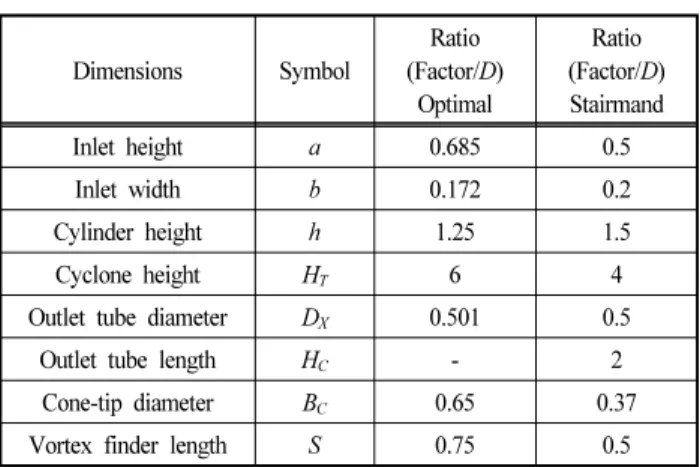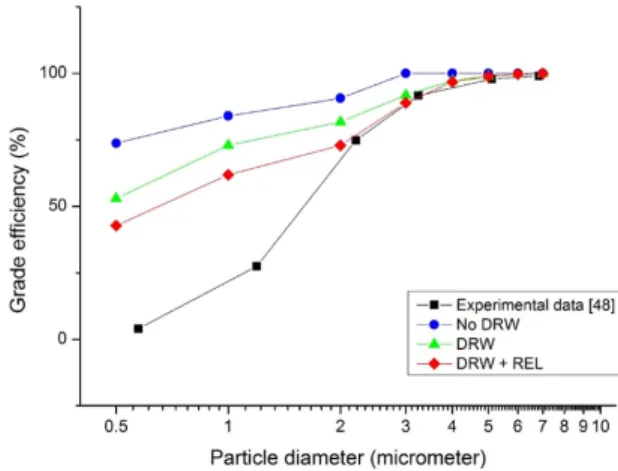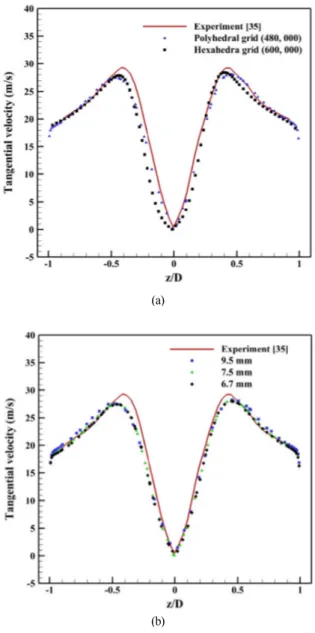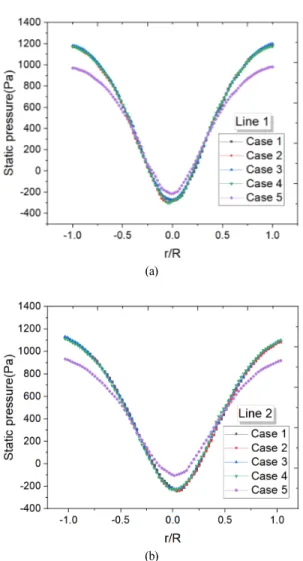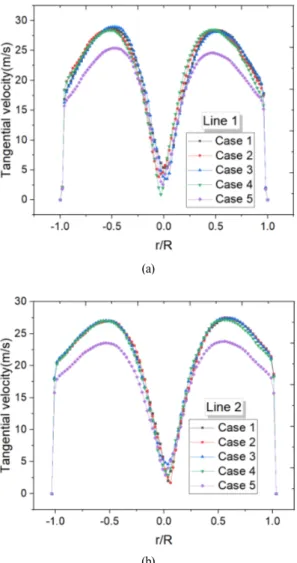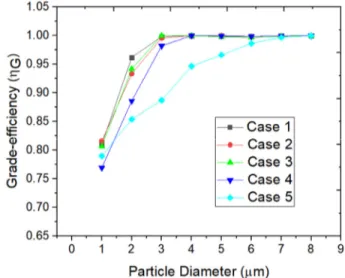1. Introduction
From the last century, engineers already applied the cyclone separators to separate solid particles from the gas or fluid flow, especially for chemical engineering and environmental field (1,2) . Until nowadays, Various types of gas cyclone separators and hydro cyclone separators are still widely used for efficiently removing solid particles of relatively big size as the convenience of construction and application, simplicity of operation and low cost of electric power (3) . For the
evaluation of cyclone performance, the pressure drop and the collection efficiency are two most important factors widely utilized in cyclone separators and many studies had been conducted in earlier century by experimental methods to increase cyclone collection efficiency and decrease the pressure drop. They tried to find empirical equations to describe the relationship between cyclone performance and constructed geometry parameters as they couldn’t rely on the numerical analysis. Moreover, at that time it was quite difficult to conduct numerical analysis because computer hadn’t
* Graduate school, Department of Mechanical Design Engineering, Hanyang University
** Corporate Research Institute, Moitech Inc.
*** Department of Mechanical Engineering, Hanyang University
† Corresponding Author, E-mail : joyoon@hanyang.ac.kr
◎ Original Paper ISSN (Print): 2287-9706
외부 미스트 분사가 있는 사이클론 집진기의 성능 및 유동 특성에 대한 수치 연구
곽명
*
⋅손형준*
⋅르 당 코이*
⋅백순창**
⋅전호찬**
⋅윤준용***†
1)2)Numerical Investigation on the Performance and Flow
Characteristics of A Cyclone Separator with External Mist Injection
Ming Guo
